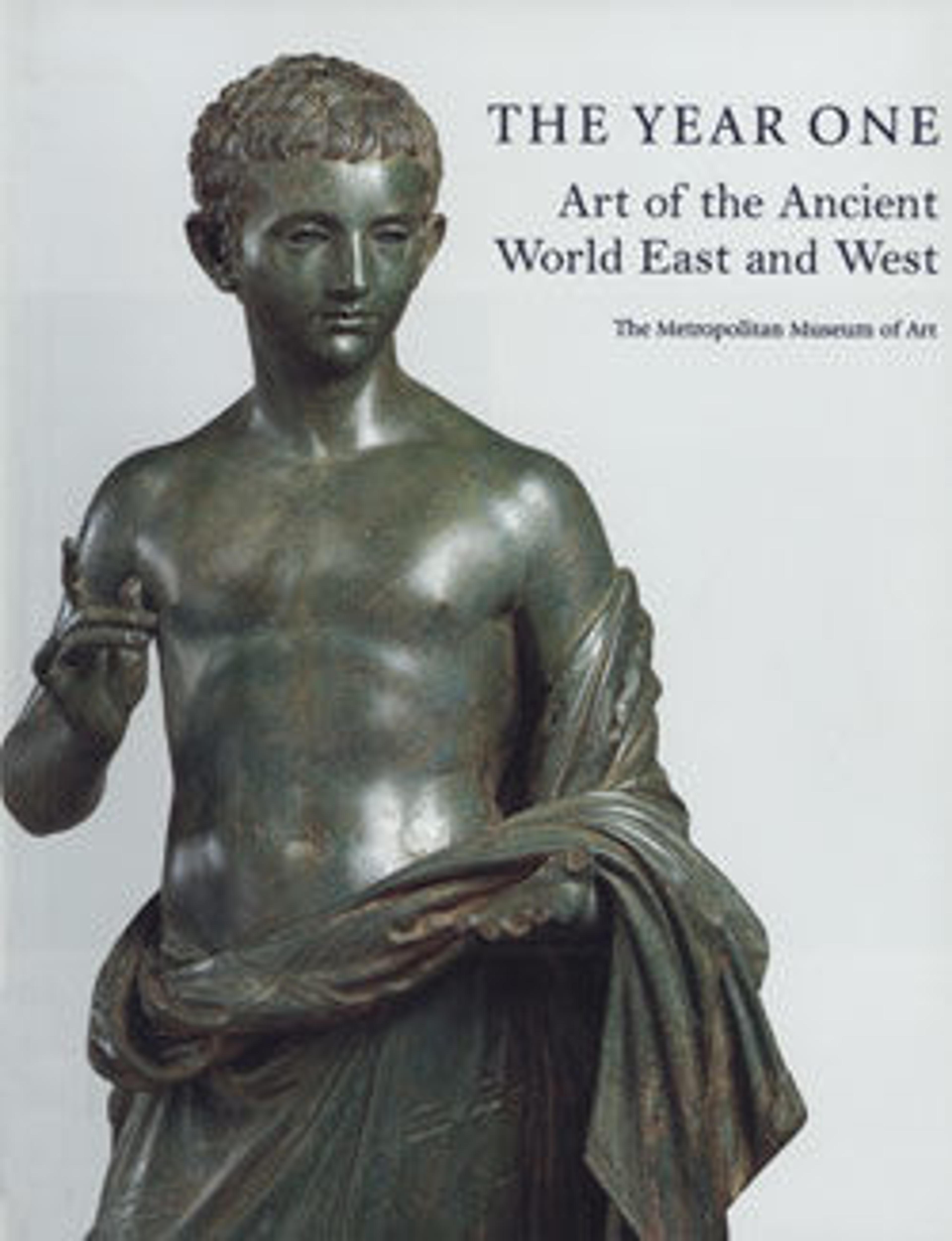Glass cantharus (drinking cup)
Translucent cobalt blue; handles in same color.
Flaring, rounded rim, with folded solid flange below; bell-shaped body, carving in sharply to solid, short stem; low, splayed foot, formed from a separate gather with knocked-off and ground outer edge; uneven, flat bottom; low kick at center of inside of body; strap handles attached to lower sides of body in pads, tooled flat above, drawn up and outwards, then curved round and down in a loop above rim, and applied to lip and underside of rim.
Complete, but repaired on rim at junction of both handles, with one small chip and rim and one larger chip on underside of edge of foot; some bubbles, elongated horizontally around rim; dulling, some pitting of surface bubbles, iridescent weathering, and small patches of limy encrustation.
This is an early type of wineglass and would have graced the table of a wealthy Roman at a dinner or drinking party. Most surviving examples are recorded from sites in the northwestern provinces, but this cup is said to be from the city of Rome.
Flaring, rounded rim, with folded solid flange below; bell-shaped body, carving in sharply to solid, short stem; low, splayed foot, formed from a separate gather with knocked-off and ground outer edge; uneven, flat bottom; low kick at center of inside of body; strap handles attached to lower sides of body in pads, tooled flat above, drawn up and outwards, then curved round and down in a loop above rim, and applied to lip and underside of rim.
Complete, but repaired on rim at junction of both handles, with one small chip and rim and one larger chip on underside of edge of foot; some bubbles, elongated horizontally around rim; dulling, some pitting of surface bubbles, iridescent weathering, and small patches of limy encrustation.
This is an early type of wineglass and would have graced the table of a wealthy Roman at a dinner or drinking party. Most surviving examples are recorded from sites in the northwestern provinces, but this cup is said to be from the city of Rome.
Artwork Details
- Title:Glass cantharus (drinking cup)
- Period:Early Imperial, Claudian or Flavian
- Date:ca. 40–80 CE
- Culture:Roman
- Medium:Glass; blown
- Dimensions:H. 4 11/16 in. (11.9 cm)
- Classification:Glass
- Credit Line:Gift of Henry G. Marquand, 1881
- Object Number:81.10.60
- Curatorial Department: Greek and Roman Art
More Artwork
Research Resources
The Met provides unparalleled resources for research and welcomes an international community of students and scholars. The Met's Open Access API is where creators and researchers can connect to the The Met collection. Open Access data and public domain images are available for unrestricted commercial and noncommercial use without permission or fee.
To request images under copyright and other restrictions, please use this Image Request form.
Feedback
We continue to research and examine historical and cultural context for objects in The Met collection. If you have comments or questions about this object record, please contact us using the form below. The Museum looks forward to receiving your comments.
